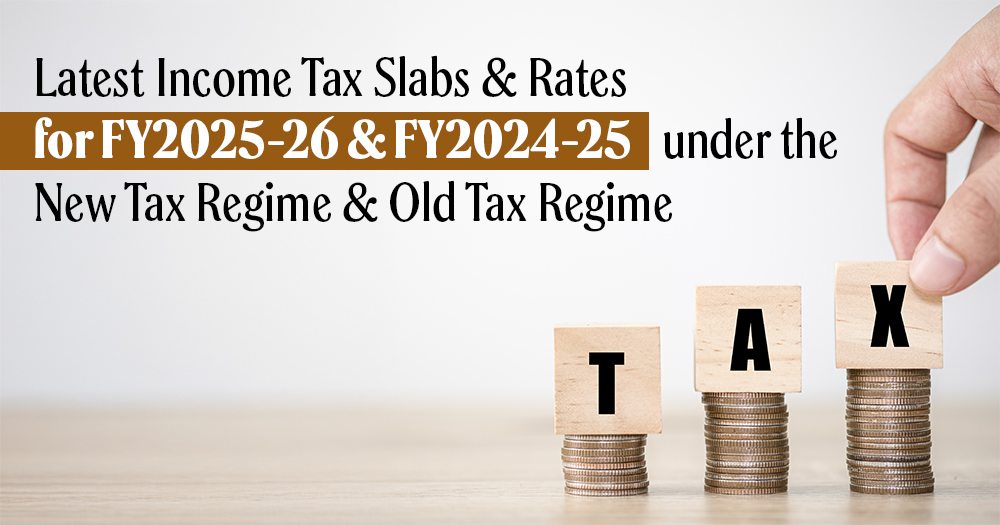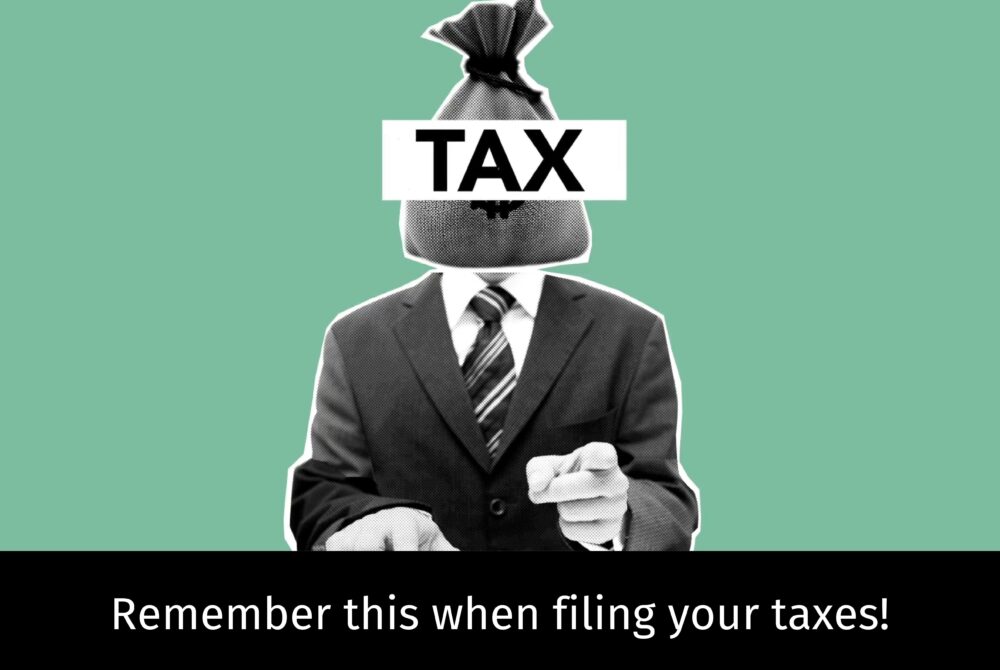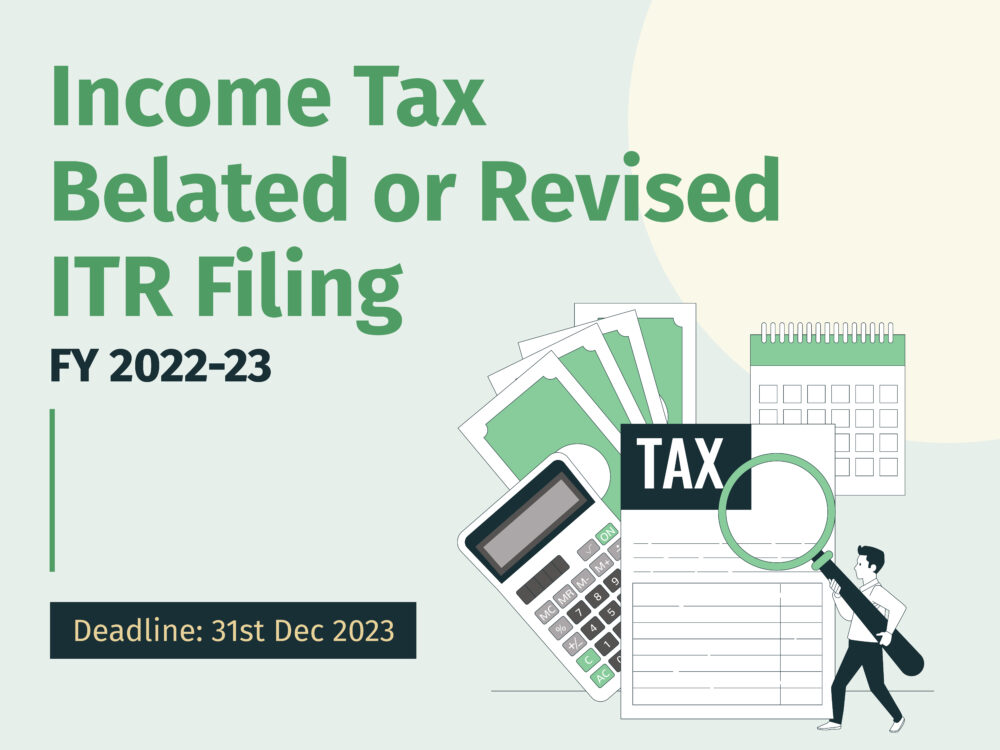Do you know which tax bracket you fall into for FY2024-25 or FY2025-26? You might feel it doesn’t matter since you rely on your chartered accountant or an online portal to file your income tax return, but understanding your tax bracket is more important than you may realise. Your income tax slabs have a direct impact on your budget, planning, and investment decisions. When you know which tax rate applies to your income, you can estimate your income after tax and develop a more accurate financial plan. Familiarity with your tax slabs and rates can help you take full advantage of deductions and exemptions, reducing your tax liability and increasing disposable income. Knowing how taxes affect your income can also help you to make better investment decisions that align with your financial goals. Ultimately, being aware of your income tax slabs helps avoid any last-minute surprises when filing your income tax return (ITR).
Before we discuss income tax slabs and rates and which rate applies in the financial year 2024-25 or 2025-26, let’s first understand the basics.
What are Income Tax Slabs?
Income tax slabs are the different rates at which income is taxed based on how much money a person earns in a financial year. Typically, individuals are classified into various categories based on their income levels, known as tax slabs. Each category has a specific tax rate.
When your income falls within a specific tax slab, you are required to pay that percentage of your income as tax according to the rate that is assigned to the tax slab.
What is Income?
Now, you must understand what income is considered for income tax purposes. As per the income tax laws, your income could be your salary, wages, annuity, pension, gratuity received from your employer; rental income earned from house property; profits and gains from business or profession; gains from capital assets such as stocks or mutual funds or property or cryptocurrency (which is commonly known as capital gains); income from other sources such as bank deposits or winning from lotteries or card games; any income earned by an individual outside India, Remember that the employer’s contribution to the Employees’ Provident Fund Organisation (EPF) account is considered income. Further compensation received under the Voluntary Retirement Scheme is also considered as income.
What are the Income Tax Slabs and Rates for FY2025-26 (AY2026-27)?
There are two regimes in India—the old tax regime and the new tax regime.
New Income Tax Slabs and Rates Under the New Tax Regime FY25-26 (AY26-27)
Budget 2025 revised the income tax slabs and rates in the new tax regime to offer much-needed tax relief to thousands of taxpayers. The new income tax slabs and rates announced in Budget 2025 will apply to your income for the financial year 2025-26, which spans from April 1, 2025, to March 31, 2026.
Here are the latest tax slabs and tax rates under the new tax regime for FY2025-26
| Income Tax Slabs for FY2025-26 (₹) | Income Tax Rates |
|---|---|
| From 0 to ₹4,00,000 | 0% |
| From ₹4,00,001 to ₹8,00,000 | 5% |
| From ₹8,00,001 to ₹12,00,000 | 10% |
| From ₹12,00,001 to ₹16,00,000 | 15% |
| From ₹16,00,001 to ₹20,00,000 | 20% |
| From ₹20,00,001 to ₹24,00,000 | 25% |
| Above ₹24,00,000 | 30% |
Changes in the New Income Tax Regime After Budget 2025
1) A tax rebate of up to Rs 60,000 will be allowed under the new tax regime if the total income does not exceed Rs 12 lakh. It means there will be no tax on income of up to Rs 12 lakh in a financial year. This rebate is not applicable for income taxed at special rates such as capital gain from sale of equity, mutual funds, etc.
2) Under the new tax regime, the basic exemption limit was hiked by Rs 1 lakh from Rs 3 lakh to Rs 4 lakh.
3) The maximum tax rate of 30% will now apply to those with incomes exceeding Rs 24 lakh, a shift from the previous threshold of Rs 15 lakh.
What are the Latest Income Tax Slabs Under the Old Tax Regime for FY2025-26 (AY2026-27)?
The old tax regime in India refers to the method of calculating income tax and the slabs that were in place before the implementation of the new tax regime. Under the old tax regime, individuals can claim various tax deductions and exemptions to lower their taxable income. This regime provides a host of deductions and exemptions, including popular ones like Section 80C, HRA, and LTA.
In the old tax regime, the income tax slabs for individuals are based on their age during the financial year. This means that the basic exemption limit—the amount of income that is not taxed—varies depending on age.
- a) For individuals under 60 years old, the basic exemption limit is Rs 2.5 lakh.
- b) For senior citizens between 60 and 79 years old, the basic exemption limit is Rs 3 lakh.
- c) For super senior citizens aged 80 and above, the basic exemption limit is Rs 5 lakh.
Notably, there were no changes in the tax slabs and rates under the old tax regime in Budget 2025.
Here are the Current Income Tax Slabs and Tax Rates Under the Old Tax Regime for FY25-26 (AY26-27)
| Income Tax Slabs for FY25-26 | Tax Rates (%) | ||
| For Taxpayers Below 60 Years of Age | For Taxpayers Above 60 but Below 80 Years of Age | For Taxpayers Above 80 Years of Age | |
| Up to Rs 2,50,000 | NIL | NIL | NIL |
| From Rs 2,50,001 to Rs 3,00,000 | 5% | NIL | NIL |
| From Rs 3,00,001 to Rs 5,00,000 | 5% | 5% | NIL |
| From Rs 5,00,001 to Rs 10,00,000 | 20% | 20% | 20% |
| Above Rs 10,00,000 | 30% | 30% | 30% |
What are the Income Tax Slabs for FY2024-25 (AY2025-26)?
For your income during the financial year 2024-25 (April 1, 2024-March 31, 2025), you have to pay tax based on the applicable tax slabs and rates for that year.
Since you need to pay tax this year based on the tax slabs and rates applicable for the financial year 2024-25(assessment year 2025-26), we are focusing on that in this article.
Here are the Current Income Tax Slabs and Rates under the New Tax Regime for FY2024-25 (AY2025-26)
| Income Tax Slabs for FY 2024-25 (₹) | Tax Rates |
|---|---|
| From ₹0 to ₹3,00,000 | NIL |
| From ₹3,00,001 to ₹7,00,000 | 5% |
| From ₹7,00,001 to ₹10,00,000 | 10% |
| From ₹10,00,001 to ₹12,00,000 | 15% |
| From ₹12,00,001 to ₹15,00,000 | 20% |
| Above ₹15,00,000 | 30% |
Key Points to Remember about the New Tax Regime for FY2024-25
1) A standard deduction of Rs 75,000 is available for salaried taxpayers under the new tax regime.
2) A tax rebate of up to Rs 20,000 is available under the new tax regime if the total income does not exceed Rs 7 lakh. There will be no tax if your income is up to Rs 7 lakh in a financial year.
3) The highest surcharge rate is 25% under the new regime.
4) The new tax regime is the default tax regime for all for the financial year 2024-25. If you want to pay tax according to the old tax regime, you have to opt for it.
5) Employees choosing the new tax regime will now benefit from a higher deduction of up to 14% of their basic salary for contributions made to the NPS by the employer on their behalf under Section 80CCD(2).
What are the Latest Income Tax Slabs under the Old Tax Regime for FY24-25 (AY25-26)?
Individuals get various exemptions and deductions if they pay taxes based on the old tax regime. However, tax slabs and rates under the old tax regime will vary from those that apply to the new tax regime.
Note: Tax slabs and rates under the old tax regime for FY24-25 (AY25-26) will be the same as those for FY25-26 (AY26-27). Therefore, you can refer to the table mentioned above under the old tax regime to calculate your tax liability.
How Much Tax do you Have to Pay for FY2024-25 (AY 2025-26)?
The amount of tax you have to pay for the financial year 2024-25 will depend on the tax regime you choose when filing your ITR for FY2024-25(AY2025-26).
If you are opting for the new tax regime for the financial year 2024-25, here is how your tax will be calculated
How to Calculate Tax Under the New Tax Regime for the Financial Year 2024-25
Assume a salaried individual with an income of Rs 16 lakh wants to pay tax under the new tax regime for the financial year 2024-25. How much tax does he have to pay under the new tax regime?
Under the new tax regime for FY2024-25, he is eligible for a standard deduction of Rs 75,000.
Assuming basic salary component is 8 lakh (50% of the salary), his employer’s contribution towards NPS at 14% would be Rs 1.12 lakh in a year. He can claim a deduction under the new tax regime for the financial year 2024-25 for this amount.
| Particulars | Amount |
|---|---|
| Gross salary | Rs 16,00,000 |
| Standard Deduction | Rs 75,000 |
| Income from Salary | Rs 15,25,000 |
| Gross Total Income | Rs 15,25,000 |
| Deduction under Section 80CCD(2) | Rs 1,12,000 |
| Net Taxable Income | Rs 14,13,000 |
Here is the tax he has to pay, following the tax slabs and rates under the new tax regime
| Income Tax Slabs | Tax Rate | Tax Amount |
|---|---|---|
| Up to ₹3,00,000 | NIL | ₹0 |
| ₹3,00,001 to ₹7,00,000 | 5% | ₹20,000 |
| ₹7,00,001 to ₹10,00,000 | 10% | ₹30,000 |
| ₹10,00,001 to ₹12,00,000 | 15% | ₹30,000 |
| ₹12,00,001 to ₹14,13,000 | 20% | ₹42,600 |
| Total Tax Liability | ₹1,22,600 | |
| Cess (4% of ₹1,22,600) | ₹4,904 | |
| Total Tax Payable in FY 2024-25 (AY 2025-26) | ₹1,27,504 |
As you can see, he has to pay Rs 1,27,504 tax under the new tax regime.
How Much Tax do you have to Pay Under the Old Tax Regime for the Financial Year 2024-25 (Assessment Year 2025-26)?
If you choose the old tax regime for the financial year 2024-25, you can take advantage of several deductions and exemptions to lower your tax liability. Deductions such as those under Section 80C, Section 80D, and HRA tax exemptions are some of the options available in the old tax regime.
Keep in mind that the income tax slabs in the old tax regime vary based on the individual’s age during the financial year.
Here’s how to calculate income tax payable under the old tax regime for FY24-25(AY25-26)
Remember, the income tax slabs under the old tax regime were different depending on an individual’s age in a financial year.
Let’s assume a salaried individual has an income of Rs 18 lakh for the financial year 2024-25. He has decided to opt for the old regime for FY2024-25. For various investments, he will be eligible to claim these deductions:
a) Rs 1.5 lakh under Section 80C
b) Rs 50,000 for investing in NPS under Section 80CCD(1B)
c) Rs 25,000 for paying health insurance premiums under Section 80D
He is also eligible to claim a standard deduction of Rs 50,000 under the old tax regime.
| Income Tax Slabs | Tax Rate | Tax Amount |
|---|---|---|
| Up to ₹3,00,000 | NIL | ₹0 |
| ₹3,00,001 to ₹7,00,000 | 5% | ₹20,000 |
| ₹7,00,001 to ₹10,00,000 | 10% | ₹30,000 |
| ₹10,00,001 to ₹12,00,000 | 15% | ₹30,000 |
| ₹12,00,001 to ₹14,13,000 | 20% | ₹42,600 |
| Total Tax Liability | ₹1,22,600 | |
| Cess (4% of ₹1,22,600) | ₹4,904 | |
| Total Tax Payable in FY 2024-25 (AY 2025-26) | ₹1,27,504 |
Here is the tax he has to pay, following the tax slabs and rates under the old tax regime
| Income Tax Slabs | Tax Rates | Tax Amount |
|---|---|---|
| Up to ₹2,50,000 | NIL | ₹0 |
| ₹2,50,001 to ₹5,00,000 | 5% | ₹12,500 |
| ₹5,00,001 to ₹10,00,000 | 20% | ₹1,00,000 |
| ₹10,00,001 to ₹15,25,000 | 30% | ₹1,57,500 |
| Tax Liability | ₹2,70,000 | |
| Cess (4% on ₹2,70,000) | ₹10,800 | |
| Total Tax Payable in FY 2024-25 (AY 2025-26) | ₹2,80,800 | |
As you can see, he has to pay Rs 2,80,800 tax under the old tax regime after availing all the eligible deductions.
What is a Surcharge?
Remember that if your net taxable income surpasses a certain threshold, a surcharge will be levied. This surcharge is levied on the amount of income tax payable before any cess is applied. As per income tax regulations, a surcharge applies when an individual’s taxable income exceeds Rs 50 lakh.
Certain exceptions apply to the surcharge rates. Suppose an individual has earned income from capital gains (short-term or long-term) from selling equity shares and equity mutual funds or dividend income. In that case, the surcharge will be capped at 15%, regardless of the income level.
What are the Surcharge Rates Under the New Tax Regime for FY2024-25?
| Surcharge Rates Under New Tax Regime for FY 2024-25 | |
|---|---|
| Income Range | Surcharge Rate |
| Up to ₹50 lakh | NIL |
| More than ₹50 lakh but up to ₹1 crore | 10% |
| More than ₹1 crore but up to ₹2 crore | 15% |
| More than ₹2 crore | 25% |
What are the Surcharge Rates Under the Old Tax Regime for FY2024-25?
| Surcharge Rate Under the Old Tax Regime | |
|---|---|
| Income Range | Surcharge Rate |
| Up to ₹50 lakh | NIL |
| More than ₹50 lakh but up to ₹1 crore | 10% |
| More than ₹1 crore but up to ₹2 crore | 15% |
| More than ₹2 crore but up to ₹5 crore | 25% |
| More than ₹5 crore | 37% |
New Tax Regime or Old Tax Regime: How to Know Which Tax Regime is the Best for You for FY2024-25
Now that you have a fair understanding of the tax slabs and rates available under both the new and old tax regimes, the next question is: which one is more suitable for you in FY2024-25?
The answer to this is no one size fits all. The old tax regime offers several deductions and exemptions, but it also has higher tax rates.
On the other hand, the new tax regime has fewer deductions, yet its tax rates are more favourable when compared to the old regime. To determine which tax regime is right for you, it is important to calculate your tax liability. You can use our tax calculator to evaluate your tax liability under both regimes for the financial year 2024-25 (assessment year 2025-26).







